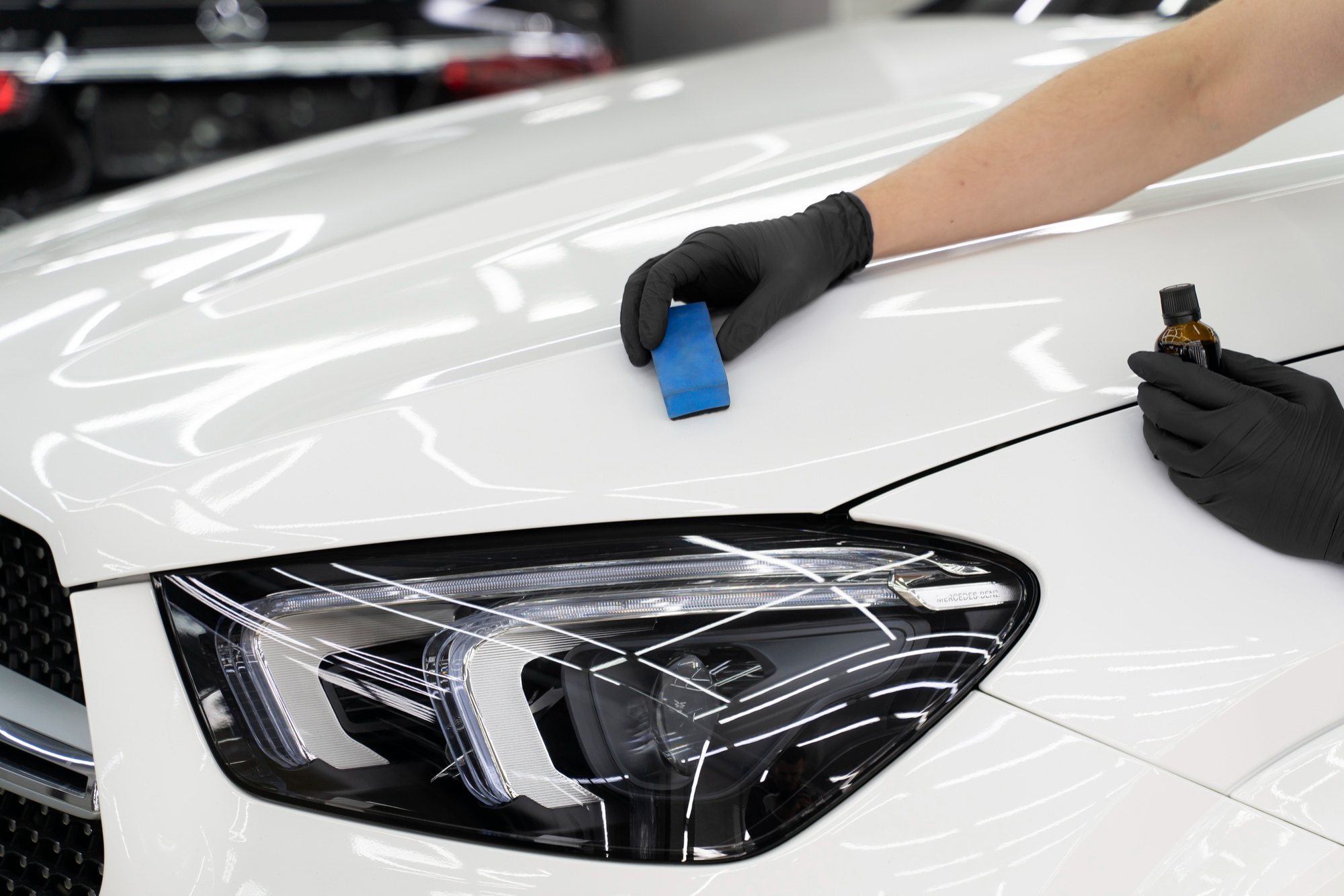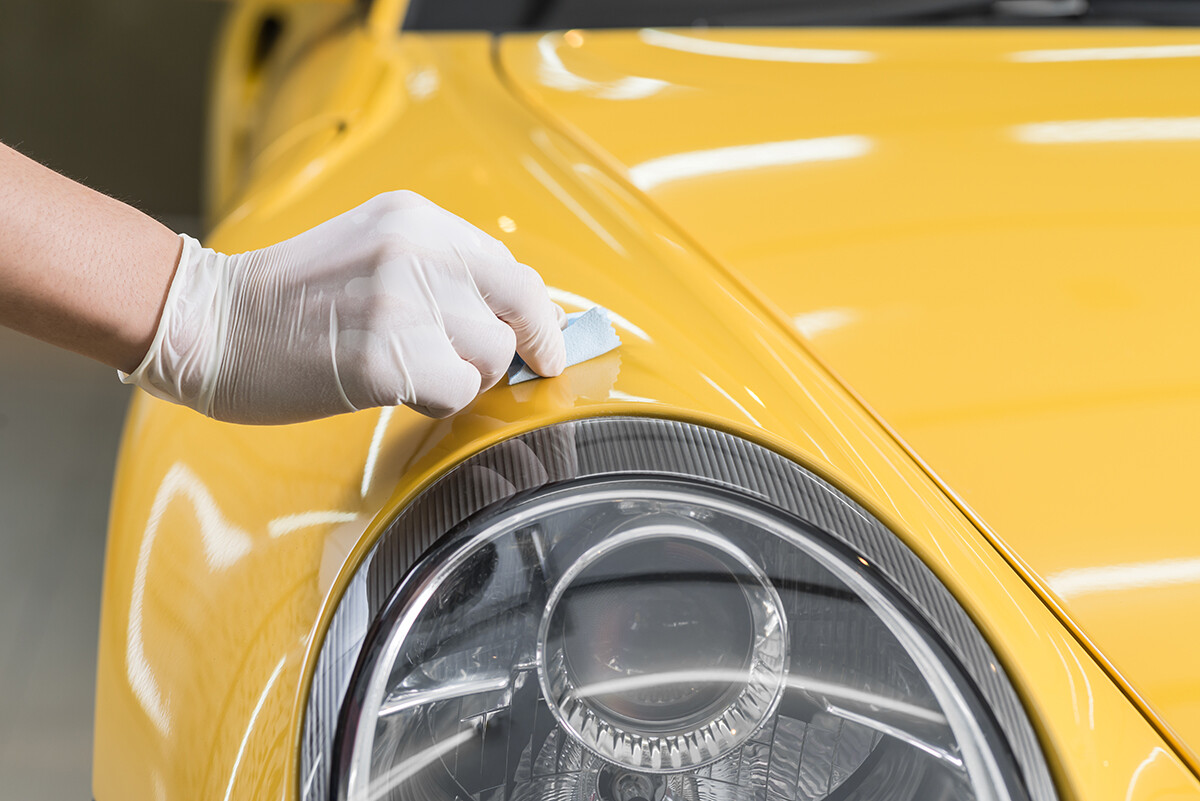Top Ceramic Coatings San Jose to Safeguard Your Automobile's Paint
Top Ceramic Coatings San Jose to Safeguard Your Automobile's Paint
Blog Article
Revealing the Scientific Research Behind Ceramic Coatings: How Does It Work and Why Is It Above Conventional Options?
Ceramic finishes have actually been getting popularity in numerous markets for their phenomenal performance and durability. The scientific research behind these coatings exceeds mere surface security, delving right into the detailed chemistry that makes them stick out from typical choices (ceramic coatings san jose). Comprehending how ceramic coverings job and why they outshine standard options is vital for those seeking to improve the longevity and resilience of their products. So, just what sets ceramic coatings apart, and how do they attain such remarkable results?
The Chemistry of Ceramic Coatings
In comprehending ceramic finishings, diving right into the detailed chemistry behind their make-up is vital for comprehending their functionality and durability. Ceramic layers are mainly made up of silicon dioxide (SiO2), which forms a protective and strong layer when put on various surface areas. This chemical framework provides extraordinary resistance to warm, chemicals, and corrosion, making ceramic finishings very looked for after for a vast array of applications.
The chemistry behind ceramic coatings entails the formation of covalent bonds between silicon and oxygen atoms, producing an inflexible network that improves the covering's strength and longevity. Furthermore, the presence of other components such as titanium, zirconium, and aluminum further enhances the layer's residential properties, offering raised firmness and adhesion to surface areas.
Understanding the chemical make-up of ceramic finishings enables the modification of formulations to fit certain requirements, whether it be for automotive, commercial, or property functions. By using the power of chemistry, ceramic finishes continue to lead the way for exceptional protection and performance in different markets.
Advantages of Ceramic Coatings

As a result, ceramic coverings make cleaning and maintaining surface areas a lot less complicated and less time-consuming. On the whole, the plethora of benefits provided by ceramic coverings make them a superior alternative compared to standard covering approaches.
Exactly How Ceramic Coatings Bond
Ceramic layers bond to surfaces via a procedure that entails molecular bond and chemical communications. When a ceramic covering is related to a surface area, it develops a strong bond by chemically sticking to the surface at a molecular degree. This bond is produced with the development of covalent bonds, which are long lasting and incredibly strong. The ceramic coating's molecules penetrate the pores of the surface, developing a limited grasp that withstands splitting up.
In addition, the chemical interactions in between the ceramic coating and the surface area even more improve the bond. ceramic coatings san jose. These interactions enable the ceramic covering to create a constant and seamless article source layer on the surface area, supplying outstanding protection and toughness. Unlike traditional coatings that might rest on the surface without totally bonding, ceramic finishings develop a permanent bond that is resistant to chemicals, UV rays, and extreme ecological problems

Fundamentally, the bonding device of ceramic layers makes certain a lasting and efficient protective layer that outmatches typical covering choices. This superior bond adds to the toughness, scratch resistance, and durability of ceramic layers, making them a preferred option for numerous applications.
Longevity of Ceramic Coatings
The extraordinary longevity of ceramic coverings stems from their robust molecular adhesion and chemical communications with surfaces, making sure a long lasting protective layer that surpasses standard coating alternatives. As soon this post as applied, ceramic finishings form a solid bond with the substratum, creating a resilient obstacle versus various environmental stressors such as UV radiation, chemicals, and abrasions. This bond is so secure that it can withstand the rigors of everyday use without weakening or breaking down rapidly.
Unlike traditional coverings that might deteriorate over time, ceramic finishings preserve their integrity for an extended period, giving resilient defense for the underlying surface area. Overall, the exceptional durability of ceramic layers makes them a remarkable selection for shielding a large variety of surfaces in different applications.
Ceramic Coatings Vs. Conventional Alternatives
In contrast to traditional coating techniques, ceramic finishings use an unique mix of resilience and safety capacities that set them apart in various surface area security applications. Conventional alternatives such as wax or sealants supply a short-term layer of security that can subside rapidly, calling for regular reapplication. On the various other hand, ceramic finishings develop a solid bond with the surface area, developing a semi-permanent or long-term obstacle that is extremely immune to abrasion, chemicals, UV rays, and severe temperature levels.
Furthermore, ceramic finishes provide exceptional hydrophobic properties contrasted to traditional finishings. The hydrophobic nature of ceramic finishings triggers water to bead up and roll off the surface, bring dirt and pollutants with it. This self-cleaning effect helps to maintain the surface's have a peek at these guys cleanliness and gloss for extended periods, reducing the need for regular maintenance.
Furthermore, ceramic layers have a thicker layer contrasted to traditional alternatives, giving improved scratch resistance and protection versus small effects. This durability makes sure resilient efficiency and assists preserve the visual allure of the treated surface for an extensive duration.
Conclusion
To conclude, the science behind ceramic finishes depends on their chemical structure and bonding properties, making them above traditional options. The advantages of ceramic finishes include boosted toughness and security for surface areas. By understanding just how ceramic layers work and their advantages over standard options, one can make enlightened choices when thinking about coating choices for different applications.
Unlike typical coverings that may rest on the surface area without totally bonding, ceramic coverings create a permanent bond that is resistant to chemicals, UV rays, and harsh environmental conditions.
The extraordinary durability of ceramic finishes stems from their robust molecular adhesion and chemical interactions with surface areas, guaranteeing a durable protective layer that exceeds traditional layer alternatives.Unlike typical coatings that may break down over time, ceramic finishes maintain their honesty for an extended period, giving long-lasting defense for the underlying surface.In contrast to standard covering methods, ceramic coverings supply a distinct blend of durability and protective capacities that set them apart in numerous surface area defense applications. By comprehending how ceramic layers work and their benefits over traditional alternatives, one can make informed decisions when thinking about coating options for various applications.
Report this page